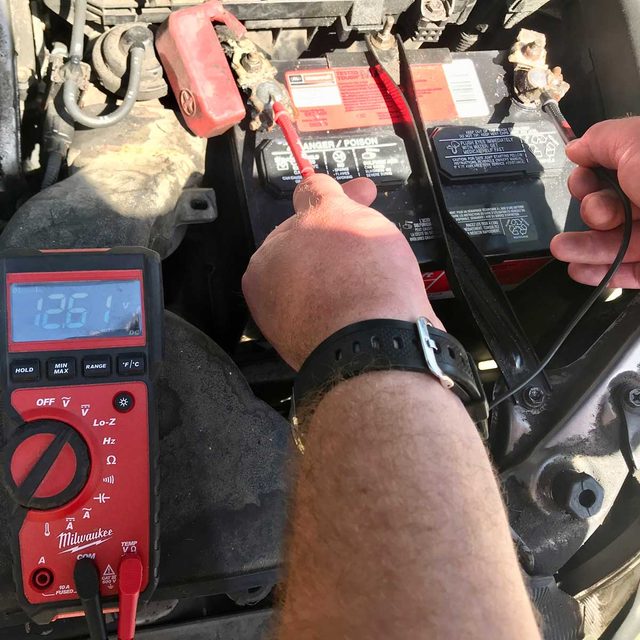A Step-by-Step Guide to Charging a Car Battery
Without a charged battery, your vehicle won't get you anywhere. Learn all about how to charge a battery so you don't get stranded.
Our editors and experts handpick every product we feature. We may earn a commission from your purchases.
Introduction
Without a working battery, your car won't start, leaving you stuck at home or stranded on the road. Car batteries are charged by an alternator that produces electricity while the car's running. Still, batteries sometimes lose some or all of their charge. You'll know when this happens because your car either won't start, or the starter motor will only turn over weakly when you turn the key.
Lots of short trips, or electrical components such as lights and radios left on for long periods while the car's not running are some of the most common reasons why a battery loses its charge. Battery issues happen to all vehicles eventually. Learn exactly how to charge a car battery, so when yours goes dead and your car won't start, you can get up and running again fast.
Tools Required
- Car battery charger
- Extension cord
- Small wire brush (optional)
- Volt meter (optional)
Watch this video to learn how to replace a car battery:
Project step-by-step (5)
Turn Everything Off
- Turn off your vehicle and make sure all interior and exterior lights and all other electrical components are off.
- Leaving these on could drain the battery faster than you’re charging it.
- Optionally, you could use a handheld volt meter to determine your battery’s state of charge. Touching the two prongs on the volt meter to their corresponding terminals on the battery will give a voltage reading.
- A fully charged 12-volt car battery (standard voltage) will read between 12.4 and 12.7 volts.
- Pro tip: Anything below 12 volts is low, and there’s a good chance your car won’t start.
- A fully charged 12-volt car battery (standard voltage) will read between 12.4 and 12.7 volts.
Set the Rate of Charge
- Choose a charge rate before connecting your battery charger to the battery.
- Simple chargers don’t allow different rates of charge, but many models do. Charge rate is expressed in amps, often starting at 2 and topping out 10.
- Pro tip: Unless you’re in a rush, choose the slowest charge rate first. Slower charging is easier on the battery and makes overcharging less likely, especially if you don’t have a volt meter and are charging blind.
- Simple chargers don’t allow different rates of charge, but many models do. Charge rate is expressed in amps, often starting at 2 and topping out 10.
- Set the charger to a faster setting only if you’ll be on hand to unhook the charger and try to start the vehicle fairly soon.
- Faster charging will get you up and running sooner, but can shorten battery life.
Find the Battery and Clean the Terminals
- Open the hood of your vehicle if you haven’t already.
- Look for two terminals on the battery, marked positive and negative.
- Remove the red plastic cover from the battery’s positive terminal (most have one).
- Before charging your car battery, use a small wire brush to carefully clean any corrosion from both terminals to ensure a good connection with the charger clips.
Connect the Charger to the Battery
- Lay your battery charger in a convenient spot next to the battery.
- Carefully connect the clamp with the red cable on your battery charger to the positive terminal of the battery.
- Wiggle the clamp around a bit to ensure it has a good grip on the body of the terminal.
- Connect the charger clamp with the black cable to the negative battery terminal in the same way.
- Plug your charger into the nearest power source.
Charge and Test the Battery
- Leave the charger connected and charging overnight if you’re not in a rush and have it set to the slowest charge rate.
- Unplug the charger from its power source when you think the battery’s charged enough to start the engine.
- Remove the charger clips from the battery terminals one at a time.
- Move the charger away from the vehicle, then replace the red plastic cap on the battery’s positive terminal.
- Try to start the car.
- If it starts, you’ve succeeded at charging your car battery. If it doesn’t start after charging overnight, it probably means your battery can no longer hold a charge and needs replacement.






